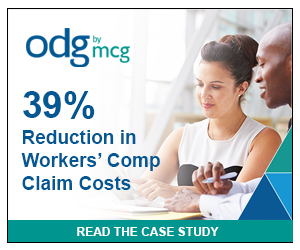Unpublished Decisions - The Hidden Harvest
Tuesday, November 25, 2008 | 0
By Mullen & Filippi
November is a time for celebrating the year’s harvest. This month, the California Courts of Appeal issued a number of decisions which, for various reasons, they declared would not be officially published. We refer to these decisions as a hidden harvest because, although unpublished decisions are not official legal authority, they often provide us with useful information about how the court views a particular subject, which we can use in analyzing other claims. This edition of the Bulletin discusses a few of the recent decisions, and some general rules to “harvest” from the opinions.
Keep Track of Old Insurance Policies. A decision issued by the Second District Court of Appeal on October 31, 2008 held that, where the insurer for a special employer admitted that it provided coverage for that employer, but could not locate a copy of the insurance policy, coverage of special employees was presumed.
CIGA v. WCAB, Second District Court of Appeal No. B205025, involved an injury claim by a construction worker employed through labor suppler Contractor’s Labor Pool, which was insured at the time by Reliance Insurance. The worker was injured while working at Carri Construction, insured by SCIF. When Reliance went into liquidation, CIGA was joined. CIGA argued that SCIF provided “other insurance” which relieved CIGA from liability for the claim.
A dispute arose as to whether the SCIF policy covered special employees like the applicant. The policy could not be located. SCIF’s attorney stipulated that Carri Construction was the special employer, and that SCIF insured Carri Construction. However, SCIF argued that it was CIGA’s burden to prove that the policy covered special employees, and CIGA failed to meet that burden because it could not produce the policy. CIGA argued that it only had to prove the policy existed, at which point coverage for special employees was presumed, absent proof to the contrary by SCIF. The Court of Appeal agreed with CIGA.
Remember To Post The Notice of Entitlement To Benefits In The Workplace. In another unpublished decision, the Second District Court of Appeal held on November 3, 2008 that a worker’s claim was not barred by the statute of limitations where she testified that her employer had not posted the required notice of entitlement to benefits, she did not know she had the right to file a workers’ compensation claim, and the employer could not prove that the notice had been posted.
In Pugh v. WCAB, Second District Court of Appeal Case No. B201677, Ms. Pugh suffered a series of injuries between 1997 and 1999 which her doctor told her were work related. However, she did not report them to her employer, and did not file a workers’ compensation claim until 2003. The employer asserted that the claim was barred by the statute of limitations. At trial, Ms. Pugh testified that she had never seen any notice posted in the workplace notifying her of the right to file a workers’ compensation claim, and did not otherwise know that she had the right to file a claim until a family member suggested it in 2003. The employer failed to produce evidence that it had posted the required notice.
The Court held that if the employer fails to post the notice of entitlement to workers’ compensation rights required by Labor Code section 3550, and the employee is otherwise unaware of her rights, the one year statute of limitations does not begin to run until the employee learns that she may be entitled to benefits.
Pay Attention To New Decisions, And Use Them When You Can. Remember the Dykes case? In an unpublished decision, the Fifth District Court of Appeal recently held that the employer is entitled to a reduction in the permanent disability benefits awarded to Mr. Dykes based on the Supreme Court’s decision in Brodie, where a petition to reopen and reduce was filed within five years of the date of injury.
As we all know, in 2005, the Court of Appeal ruled in the Dykes case that SB 899 changed the way apportionment was calculated so that only the dollar value of pre-existing permanent disability could be deducted from a subsequent permanent disability award. The Supreme Court denied review, and Mr. Dykes was awarded benefits based on this calculation. In the meantime, other Court of Appeal decisions held that SB 899 did not change how apportionment was calculated, and the percentage of prior disability should be deducted when calculating a new permanent disability award. In 2007, the Supreme Court held in Brodie that SB 899 did not change how apportionment should be calculated, overruling the Dykes decision.
In 2006, when conflicting decisions had been issued by the various Courts of Appeal, the defendant in Dykes filed a petition to reopen and reduce the award, arguing that later decisions established that the apportionment method used to calculate Mr. Dykes’ permanent disability benefits was wrong. In the recent decision issued November 5, 2008, the Court of Appeal found that, where a timely petition to reopen is filed, a clarification of the applicable law by a higher court constitutes good cause to reopen, and in this case reduce, the award.
Mullen & Filippi is a workers' compensation defense law firm with 11 offices located throughout California. This column was reprinted with the firm's permission from its client newsletter.



Comments